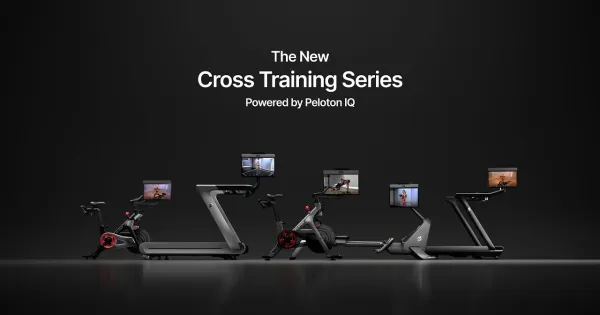Paid Search Ads 101: Everything You Should Know

In the world of online advertising, paid search ads have become a powerful tool for businesses looking to connect with their target audience and drive relevant traffic to their websites.
These ads, also known as pay-per-click (PPC) ads, offer a cost-effective way to promote products and services, but understanding how they work and how to use them effectively is crucial.
In this comprehensive guide, we will explore everything you should know about paid search ads, from their basics to advanced strategies.
1) What Are Paid Search Ads?

Paid search ads offer several advantages to advertisers. First and foremost, they provide a highly targeted approach to reaching potential customers via search engines like Google and Bing. Advertisers can select the keywords or phrases they want to target, ensuring their ads are displayed to users actively searching for related products or services. This precision not only increases the chances of attracting interested prospects but also allows for a more efficient allocation of advertising budget.
Additionally, paid search ads offer near-instant visibility. Unlike some other forms of digital marketing, PPC ads can appear at the top of search engine results pages (SERPs) as soon as a campaign is launched, providing immediate exposure to a relevant audience. This speed is particularly valuable for businesses looking to promote time-sensitive offers or respond quickly to changing market conditions.
Furthermore, PPC platforms like Google Ads and Bing Ads offer robust tracking and analytics tools, allowing advertisers to measure the performance of their campaigns in real-time and make data-driven adjustments to optimize results.
2) How Do Paid Search Ads Work?

The bidding process is at the core of paid search advertising. Advertisers bid on specific keywords or phrases they want to target, indicating the maximum amount they're willing to pay for a single click on their ad. These bids are made in competition with other advertisers targeting the same keywords. However, securing the top spot on the SERP doesn't solely depend on the highest bid. Search engines also consider the quality and relevance of the ad. This is where ad quality and ad rank come into play. An ad with higher ad quality and relevance may outrank a competitor with a higher bid but a less relevant ad.
Ad extensions are another crucial element in determining ad position. These are additional pieces of information that can be included with the ad, such as links to specific pages on the website, phone numbers, or additional text. Ad extensions provide more context to users and can improve the click-through rate (CTR) of the ad. An ad with well-crafted extensions that provide valuable information may gain a competitive edge in ad rank and placement.
Lastly, advertisers have control over their budget, setting daily or monthly limits to manage ad spend effectively. Once the budget is exhausted, the ads will stop showing for the specified period, preventing overexpenditure. This budget control allows advertisers to manage their advertising costs and allocate resources strategically.
3) Keyword Research and Selection

Keyword research is the foundation of any effective paid search ad campaign. It's essential to put yourself in the shoes of your potential customers and think about the words or phrases they might use when searching for products or services like yours. These keywords should be relevant, specific, and align with your business goals. To identify the right keywords, you can use tools like Google Keyword Planner, which not only provides keyword suggestions but also estimates their search volume. This data can help you gauge the popularity of specific keywords and prioritize them accordingly.
Once you've compiled a list of relevant keywords, it's time to create ad groups. Ad groups are clusters of related keywords that allow you to tailor your ads and landing pages more precisely. Grouping keywords by relevance helps ensure that the ad shown to users closely matches their search intent. For example, if you're an online shoe retailer, you might have ad groups for different types of shoes like "running shoes," "casual shoes," and "athletic shoes."
This level of granularity enables you to craft highly targeted ad copy and direct users to landing pages that specifically address their needs, ultimately improving the effectiveness of your paid search ad campaign.
4) Crafting Compelling Ad Copy

Creating compelling ad copy is crucial for the success of your paid search ads. Your ad copy should be concise yet persuasive, clearly conveying the value and benefits of your product or service. Highlight what sets you apart from competitors and why users should choose your offering. Including relevant keywords in your ad copy can also help improve ad relevance and click-through rates.
A well-structured ad typically consists of a compelling headline, descriptive text, and a strong call to action (CTA). The headline should grab users' attention and provide a snapshot of what your ad offers. The descriptive text should provide more details and reasons why users should click on your ad. Lastly, the CTA should prompt users to take action, whether it's making a purchase, signing up for a newsletter, or contacting your business.
Experiment with different ad variations and A/B testing to determine which ad copy performs best and resonates most with your target audience. Continuous refinement of your ad copy based on performance data is key to optimizing your paid search ad campaigns.
5) Landing Page Optimization

The landing page plays a pivotal role in your paid search ad campaign's success. It's the destination where users arrive after clicking your ad, and it should align seamlessly with the ad's message and intent. Make sure that the landing page delivers exactly what the ad promises, whether it's more information, a product purchase, or a sign-up form. Consistency between your ad and landing page not only boosts user trust but also enhances your Quality Score, a metric used by search engines to evaluate the relevance and quality of your ads.
Optimizing your landing page for speed, mobile responsiveness, and user-friendliness is essential. Slow-loading pages or ones that don't function well on mobile devices can lead to high bounce rates and lost conversions. Ensure that the content on your landing page is clear, concise, and relevant to the user's query. Implement persuasive elements, such as customer testimonials, compelling visuals, and trust signals like security badges, to encourage users to take the desired action.
Regularly test and refine your landing pages to improve conversion rates, and consider conducting A/B tests to determine which page elements and designs are the most effective in driving conversions.
6) Setting a Budget and Bidding Strategy

Setting a budget and bidding strategy is a crucial aspect of managing paid search ad campaigns effectively. First, establish your daily or monthly budget based on your advertising goals and financial capacity. Consider how much you're willing to spend to achieve your desired results, keeping in mind that paid search advertising can be competitive, and costs can vary widely depending on your industry and chosen keywords.
Next, select a bidding strategy that aligns with your campaign objectives. Manual bidding allows you to have precise control over how much you're willing to pay for each click. Automatic bidding, on the other hand, lets the ad platform adjust your bids to maximize clicks or conversions based on your budget. Enhanced Cost-Per-Click (ECPC) is a hybrid approach that combines manual and automatic bidding, allowing the ad platform to adjust your bids within a set range.
Whichever strategy you choose, it's essential to regularly monitor your campaign's performance. Analyze metrics like click-through rate (CTR), conversion rate, and return on ad spend (ROAS). Adjust your bids as needed to optimize your campaign and achieve the best possible results within your budget constraints.
7) Tracking and Analytics

Measuring the success of your paid search campaigns is vital to their continuous improvement. Leveraging tracking tools such as Google Analytics and Google Ads conversion tracking provides a wealth of data to assess your campaigns. Start by monitoring your click-through rate (CTR), which indicates how many users are clicking on your ads relative to the number of times they're displayed. A higher CTR typically suggests better ad relevance and audience engagement.
Next, keep a close eye on your conversion rate, a metric that measures how many users complete a desired action, such as making a purchase or signing up for a newsletter, after clicking on your ad. A high conversion rate signifies that your ad and landing page are effectively driving user actions. Lastly, track your return on investment (ROI) to evaluate the profitability of your paid search efforts. By comparing the revenue generated from your ads to the cost of running the campaigns, you can assess the financial viability of your advertising strategy.
This data-driven approach allows you to make informed decisions and refine your ad strategy over time, optimizing your paid search campaigns for maximum effectiveness.
8) Ongoing Optimization

Paid search advertising is an ever-evolving landscape that demands ongoing optimization efforts. To ensure the effectiveness of your campaigns, it's essential to conduct regular reviews of various elements. Start by closely monitoring the performance of your chosen keywords. Identify which keywords are generating clicks and conversions and which ones might be underperforming. This analysis allows you to allocate your budget more efficiently toward keywords that yield the best results while making informed decisions about underperforming ones.
In addition to keyword optimization, pay attention to your ad copy and landing pages. Craft compelling ad copy that highlights your unique selling points and encourages users to take action. A/B testing can be a powerful tool in this regard, allowing you to experiment with different ad variations to determine which resonates best with your audience. Similarly, optimize your landing pages to ensure they align with your ads, load quickly, and provide a seamless user experience.
By continuously refining these elements based on data-driven insights, you can adapt your strategy and maximize the return on investment (ROI) of your paid search advertising efforts.
9) Ad Extensions

Ad extensions in your paid search campaigns can significantly enhance the visibility and appeal of your ads. For instance, site link extensions allow you to include additional links below your main ad, directing users to specific pages on your website. These are particularly useful for promoting specific products, services, or sections of your site. Callout extensions enable you to highlight key benefits or offers, making your ad more compelling. If you have physical locations, location extensions can display your business address and map, encouraging users to visit your store or office.
By strategically incorporating ad extensions, you not only provide more value to your audience but also increase the chances of user interaction with your ads. These extensions can be customized to align with your campaign goals, whether it's driving website traffic, encouraging calls, or promoting visits to your physical locations. They add depth and relevance to your ads, making them more informative and enticing to potential customers. When utilized effectively, ad extensions can play a crucial role in boosting the overall performance of your paid search campaigns.
10) Ad Quality and Relevance

In the world of paid search ads, relevance is king. Search engines like Google prioritize user experience, and they reward advertisers who provide relevant and high-quality ads. To achieve this, it's crucial to focus on creating ads that directly match user search intent. This means that your ads should not only contain the keywords users are searching for but also address their needs, questions, or problems. When users find your ads highly relevant to their queries, they are more likely to click through, which can improve your ad's click-through rate (CTR).
However, relevance doesn't stop at the ad copy. It extends to your landing pages as well. Ensure that your landing pages deliver on the promises made in your ads. If your ad highlights a particular product or service, make sure users land on a page that provides detailed information about that offering. A seamless transition from ad to landing page creates a positive user experience, reduces bounce rates, and can contribute to better ad rankings.
Moreover, high-quality landing pages tend to have faster load times, mobile-friendliness, and easy navigation, all of which can boost user satisfaction and engagement. Overall, focusing on relevance not only improves your ad positions but also enhances the overall effectiveness of your paid search campaigns.
Pros of Paid Search Ads
- Highly Targeted: Paid search ads allow you to target specific keywords and demographics, ensuring that your ads are seen by a relevant audience actively searching for your products or services.
- Quick Results: Unlike some other forms of advertising, paid search ads can generate immediate results. Your ads can appear at the top of search engine results pages (SERPs) within minutes of launching a campaign.
- Cost Control: Advertisers have control over their budget, allowing them to set daily or monthly spending limits. This control helps manage advertising costs effectively.
- Measurable Results: Paid search advertising provides detailed performance metrics, such as click-through rates (CTR), conversion rates, and return on investment (ROI), enabling you to measure the effectiveness of your campaigns accurately.
- Flexibility: Campaigns can be easily adjusted and optimized in real-time based on performance data. You can tweak ad copy, keywords, and budgets to improve results continually.
Cons of Paid Search Ads
- Competition: Popular keywords can have high competition, leading to increased bid costs. This can make it challenging for small businesses with limited budgets to compete effectively.
- Ongoing Management: Successful paid search advertising requires ongoing monitoring and optimization. Advertisers must invest time and effort to maintain and refine campaigns.
- Click Fraud: Click fraud, where competitors or malicious entities click on ads with the intention of exhausting an advertiser's budget, can be a concern. Advertisers need to be vigilant and use click fraud prevention tools.
- Ad Blindness: Some users tend to ignore paid search ads and focus on organic search results. Advertisers must continually refine ad copy and targeting to combat ad blindness.
- Potential for Overspending: Without careful budget management, it's possible to overspend on paid search ads, especially if campaigns are not closely monitored. Advertisers need to set and adhere to budgets to avoid unexpected costs.
- Limited Ad Space: There's a finite amount of ad space on SERPs, and competition for top positions can be fierce. This means that not all ads will appear in prominent positions, potentially limiting visibility.
Final Thoughts
Paid search ads offer a powerful way to reach your target audience and drive valuable traffic to your website. By mastering the fundamentals of paid search advertising, conducting thorough keyword research, crafting compelling ad copy, and continuously optimizing your campaigns, you can harness the full potential of this advertising medium.
Paid search ads can be a cost-effective and results-driven addition to your digital marketing strategy when executed strategically and with a focus on user relevance and quality.





